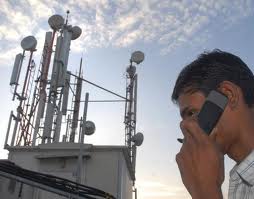  Nine years ago when a cluster of cell phone towers were also installed in Pramod Kasliwasl’s neighborhood, he couldn’t have imagined what was in store for his family. As a result of lacking guidelines and regulations, there were towers which were only 10 yards from his bedroom. Today he suffers from brain cancer. Three more members in the family suffer the same fate.
The telecom industry will like us to believe it to be sheer coincidence, even a baseless assumption. All along, the industry has boldly denied the apparent instances of possible radiation induced damage.
The biggest marketing trend, however, of the previous century has been finally established as one of the most lethal substances of the present one, tobacco products. It appears that in this era that brunt has been taken up by mobile phones, it is the most rapidly expanding business anywhere in the world. The question that arises is: Like its previous counterpart, is it also deadly?
For the time being if we don’t consider the much talked about side effects of long term exposure to mobile radiation, there are still much bigger dangers, consequences of which many don’t even know.
The World Health Organisation has classified mobile phone radiation on the IARC scale into Group 2B, possibly carcinogenic. A carcinogen is any substance, radionuclide, or radiation that is an agent directly involved in causing cancer. This may be due to the ability to damage the genome or to the disruption of cellular metabolic processes. Several radioactive substances are considered carcinogens. This classification puts mobile phones in the same category as proven deadly substances like lead, DDT, styrene, welding fumes.
One major difficulty in establishing a direct link between cancer and mobiles is the fact that it takes decades of exposure for the symptoms to start manifesting themselves. And even then researchers cannot be sure that the cause is not exposure to some other deadly environmental agent.
The Indian landscape has changed drastically over the past decade. We have had our telecom revolution and consequently had the telecom tower invasion of our neighbourhoods. The towers emit electromagnetic radiations which use the surrounding air as the medium. These are the signals on which the whole mobile network depends. As the number of users has increased exponentially, so has the number of towers to cope up with the increasing connection density.
A study conducted by IIT Bombay found out that people living within 10 m proximity of telecom towers are exposed to as much as 10,000 -1,00,00,000 times more radiations than is required for mobile signal strength.
The government has recently ordered new cut-down levels bringing them down to 1/10th of present emitted radiation levels, which may not negate the problem completely. As the HOD of Electrical Engineering at IITB, Professor Girish Kumar agrees, it should have been restricted to 1/1000th or, if possible, to 1/10,000th of the current levels as health problems have even appeared at 1/1000th level.
Growing concern over this issue has caused major cell phone companies to take some preemptive steps. Manufacturers of many popular cell phones already warn consumers to keep their device away from their body and medical experts say there are other ways to minimize cell phone radiation. Usage of a hands-free device is recommended, which places more distance between the phone and the head of the user. The logic behind such recommendations is that the further the phone is from the body, the less radiation is absorbed. Users can text instead of talk if they want to keep the phone away from their faces. Finally, cell phones emit the most radiation when they are attempting to connect to cellular towers. A moving phone, or a phone in an area with a weak signal, has to work harder, giving of more radiation. So users can avoid using their cell phones in elevators, buildings and rural areas if they want to reduce their exposure, experts say.
Cell phones have become such an integral part of modern man’s lives that it is impossible to imagine a reverse step in this direction. But better research, standard maintenance and public awareness is required to ensure that every time we pick up a phone, we do not dig up our own graves.
Contributed by
Amir Raza, Piyush Garg, Hanan Qureshi
Syaahi, IIT Roorkee |